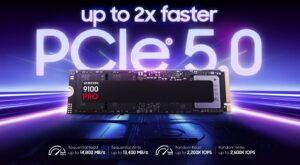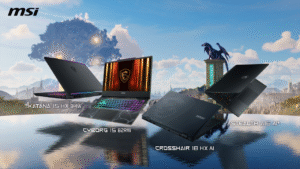Unreal Engine and NVIDIA: From One Generation to the Next

NVIDIA has supported Unreal Engine 4 throughout its eight-year run — that continues with today’s debut of Unreal Engine 5.
Square/Enix presents the fictional city of Midgar in Final Fantasy VII Remake at a filmic level of detail. Epic’s Fortnite bathes its environments in ray-traced sunlight, simulating how light bounces in the real world. And artists at Lucasfilm revolutionized virtual production techniques in The Mandalorian, using synchronized NVIDIA RTX GPUs to drive pixels on LED walls that act as photoreal backdrops.
In the eight years since Epic Games launched Unreal Engine 4, graphics has evolved at an unprecedented rate. UE4’s advances in world-building, animation, lighting and simulation enabled creators to bring to life environments only hinted at in the past.
In that same time, NVIDIA produced the optimal GPUs, libraries and APIs for supporting the new features the engine introduced. Tens of thousands of developers have enjoyed the benefits of pairing Unreal Engine with NVIDIA technology. That support continues with today’s debut of Unreal Engine 5.
Epic and NVIDIA: Building the Future of Graphics
From the launch of the GeForce GTX 680 in 2012 to the recent release of the RTX 30 Series, NVIDIA has supported UE4 developers in their quest to stay on the bleeding edge of technology.
At Game Developers Conference 2013, Epic showed off what Unreal Engine 4 could do on a single GTX 680 with their “Infiltrator” demo. The big rendering advances in that demo were a physically-based rendering pipeline, a groundbreaking temporal anti-aliasing solution, and a lighting solution that mixed the best of precomputed and dynamic lighting. It would be one of many times Unreal Engine and NVIDIA raised the bar.
Square/Enix presents the fictional city of Midgar in Final Fantasy VII Remake at a filmic level of detail. Epic’s Fortnite bathes its environments in ray-traced sunlight, simulating how light bounces in the real world. And artists at Lucasfilm revolutionized virtual production techniques in The Mandalorian, using synchronized NVIDIA RTX GPUs to drive pixels on LED walls that act as photoreal backdrops.
In the eight years since Epic Games launched Unreal Engine 4, graphics has evolved at an unprecedented rate. UE4’s advances in world-building, animation, lighting and simulation enabled creators to bring to life environments only hinted at in the past.
In that same time, NVIDIA produced the optimal GPUs, libraries and APIs for supporting the new features the engine introduced. Tens of thousands of developers have enjoyed the benefits of pairing Unreal Engine with NVIDIA technology. That support continues with today’s debut of Unreal Engine 5.
Epic and NVIDIA: Building the Future of Graphics
From the launch of the GeForce GTX 680 in 2012 to the recent release of the RTX 30 Series, NVIDIA has supported UE4 developers in their quest to stay on the bleeding edge of technology.
At Game Developers Conference 2013, Epic showed off what Unreal Engine 4 could do on a single GTX 680 with their “Infiltrator” demo. The big rendering advances in that demo were a physically-based rendering pipeline, a groundbreaking temporal anti-aliasing solution, and a lighting solution that mixed the best of precomputed and dynamic lighting. It would be one of many times Unreal Engine and NVIDIA raised the bar.https://www.youtube.com/embed/dO2rM-l-vdQ
In 2015, NVIDIA founder and CEO Jensen Huang appeared as a surprise guest at an Epic Games event to announce the GTX TITAN X. Onstage, Tim Sweeney was given the very first GTX TITAN X off the production line. It’s a moment in tech history that’s still discussed today.
At GDC 2018, the development community got their first look at real-time ray tracing running in UE4 with the reveal of “Reflections,” a Star Wars short video. The results were so convincing you’d have been forgiven for thinking the clip was pulled directly out of a J.J. Abrams movie.
Textured area lights, ray-traced area light shadows, reflections, and cinematic depth of field all combined to create a sequence that redefined what was possible with real-time graphics. It was shown on a NVIDIA DGX workstation powered by four Volta architecture GPUs.
Later in the year at GamesCom, that same demo was shown running on one consumer-grade GeForce RTX graphics card, thanks to the Turing architecture’s RT Cores, which greatly accelerate ray-tracing performance.
Read More at NVIDIA














